
"Noir is one of Canadian pianist Paul Plimley's best trio sessions. It was recorded in a Montreal studio over two days in October 1992. Longtime partner Lisle Ellis is on bass, more recent encounter Gregg Bendian on drums, and saxophoni...
In Stock
Quantity in Basket: None
Log In to use our Wish List
Shipping Weight: 5.00 units
EU & UK Customers:
Discogs.com can handle your VAT payments
So please order through Discogs
Sample The Album:
Lisle Ellis-bass
Gregg Bendian-drums, vibraphone, percussion
Paul Plimley-piano
Bruce Freedman-saxophone
Click an artist name above to see in-stock items for that artist.
Label: Les Disques Victo
Catalog ID: VICCD022
Squidco Product Code: 23951
Format: CD
Condition: New
Released: 1993
Country: Canada
Packaging: Jewel Case
Recorded October 1992 at Silent Sound Studio in MontrŽal.
"Noir is one of Canadian pianist Paul Plimley's best trio sessions. It was recorded in a Montreal studio over two days in October 1992. Longtime partner Lisle Ellis is on bass, more recent encounter Gregg Bendian on drums, and saxophonist Bruce Freedman guests on two tracks. All but Freedman contributed pieces, but the overall mood is marvelously homogeneous and best described by the title -- these are the dark corners of free jazz. The set opens with "Noir," a lightly sketched theme with jazzy overtones which feels like a triple soliloquy addressed to the moon (the theme comes back in "Noir Encore," a second take rendering the working canvas of the piece more explicit). "Open Apertures" is more thoroughly written and features Freedman. Its theme could almost have been lifted from Thelonious Monk's songbook. Ellis' "Fade to Gray" and "Fade to Gray Then Blue" are also very jazz-oriented -- on the former Bendian alternates between his drum kit and the vibraphone. And then, there arethose three pieces by Bendian. "Jill Cyborg" is a conventional (but very well-executed) free jazz tune in the form of a main theme/let's break apart/let's get back together. Paradoxically, "Sleeves of Alloy" is a piano/bass duet written by a drummer -- and it's a lot closer to Xenakis than Monk. Ellis keeps shifting elegantly from his bow to his fingers. "To David Cronenberg: Interzonia" brings in some Edgar Varese and a very dark atmosphere nourished by loud dramatic chords and disquieting suspensions. There is nothing left of free jazz here: This track is the most tightly written of the set, and is one of Bendian's strongest compositions. Strongly recommended."-Francois Couture, All Music
Artist Biographies
• Show Bio for Lisle Ellis "Lisle Ellis, (born November 17, 1951) is a Canadian jazz bassist and composer who is known for his improvisational style and use of electronics. Ellis was born in Campbell River, British Columbia. Ellis began playing electric bass in his teens and worked professionally from an early age in numerous environments including studios, radio & TV shows, and strip clubs. He was born Lyle Steve Lansall, but used his initials L. S. as his stage name Ellis; he also used the name L. S. Lansall-Ellis professionally. Ellis studied at the Vancouver Academy of Music with Walter Robertson and attended Douglas College in Vancouver. He later studied at the Creative Music Studio in New York City from 1975-1979. Ellis lived in Toronto, Ontario, Canada from 1982 until 1983 and then Montreal, Quebec, Canada from 1983 until 1992. In 1986 Ellis was the first recipient of Canada's Fred Stone Award, given annually to a musician for integrity and innovation. In the early 1980s in Vancouver, and the late 80's in Montreal, Ellis was a conspicuous activator of musician alliance organizations, performance venues, and concert series presentations. One collective in particular, Vancouver's New Orchestra Workshop, is still active nearly thirty years later. After moving to the United States in 1992, he settled in San Francisco, working with Glenn Spearman from 1992 until 2001. He lived in San Diego from 2001Đ2005 and New York City from 2005 to the present. In 1994, he was a member of the Cecil Taylor band for a brief tour of California. Ellis's discography includes performances with Peter Brštzmann, Andrew Cyrille, Joe McPhee, Dave Douglas, Glenn Spearman and about 40 recordings for Music & Arts, Black Saint, DIW, Hat Art, New World, and Victo. His 1989 album, Kaleidoscopes: The Ornette Coleman Songbook, with pianist Paul Plimley, was given five stars in Down Beat magazine. Since the late 1990s, Ellis has been primarily focused on developing an electro-acoustic interface he calls "bass & circuitry". By 2008, with the completion of a template for this interface Ellis turned his attention back to acoustic music projects with an emphasis on jazz based improvisation and to finding a balance between his electronic and acoustic music interests. Central to Ellis's music, and a vehicle for both his electronic and acoustic experiments, has been his long standing trio with Larry Ochs and Donald Robinson called What We Live. Di Terra, an Italy-based trio with Alberto Braida (piano), and Fabrizio Spera (drums), has been an exclusively acoustic music vehicle for Ellis. His experimental trio Audible Means with Ellery Eskelin (saxophone), and Erik Deutsch (keyboards), was active on the New York scene in 2006 and 2007 and was a focal point for Ellis's bass & circuitry explorations. Since his arrival in New York, collaborations and interactions with composer/electronic musician Tom Hamilton have also been important to Ellis's work in electronic music." ^ Hide Bio for Lisle Ellis • Show Bio for Paul Plimley "Paul (Horace) Plimley (born 16 March 1953 in Vancouver, British Columbia) is a free jazz pianist and vibraphonist. He is one of the doyens of the Canadian jazz avant-garde, a co-founder of the New Orchestra Workshop Society and frequent collaborator with the bassist Lisle Ellis. He is well versed in classical music and in all styles of jazz; he was one of the first and most convincing interpreters of Ornette Coleman's music on the piano (an instrument usually seen as antithetical to Coleman's music). Plimley studied classical piano under Kum-Sing Lee at the University of British Columbia (1971-3). In 1978-9 he studied with Karl Berger and Cecil Taylor at the Creative Music Studio in Woodstock, NY. In 1977 he founded the New Orchestra Workshop (NOW), and he has been active in many of the ensembles associated with NOW, including the NOW Orchestra. His work with Lisle Ellis is extensive, and includes the duo CD Both Sides of the Same Mirror (Nine Winds, 1989); When Silence Pulls, with Andrew Cyrille (Music & Arts, 1990); Noir, with Bruce Freedman and Gregg Bendian (Victo, 1992); Density of the Lovestruck Demons with Donald Robinson (Music & Arts, 1994); and Safecrackers with Scott Amendola (Victo, 1999). Most notable, perhaps, are two recordings for Hat Art: the collection of Ornette Coleman interpretations, Kaleidoscopes (1992), and (under Joe McPhee's leadership), a revisiting of Max Roach's Freedom Now Suite called Sweet Freedom, Now What? (1994). In May 2000 he recorded a live act at the 17th International Festival of New Music in Victoriaville, Quebec with John Oswald, Marilyn Crispell and Cecil Taylor. The album was released at Victo Records. The still Vancouver based musician is a regular at the annual Vancouver International Jazz Festival." ^ Hide Bio for Paul Plimley
11/18/2024
Have a better biography or biography source? Please Contact Us so that we can update this biography.
11/18/2024
Have a better biography or biography source? Please Contact Us so that we can update this biography.
Track Listing:
1. Noir 6:13
2. Jill Cyborg Noir 7:35
3. [To David Cronenberg] Interzonia 4:41
4. Sleeves of Alloy 4:30
5. Open Apertures 9:42
6. Noir Encore 7:00
7. Fade to Grey 11:13
8. Fade to Grey 'Then Blue 1:45
May 2017
Victo
Improvised Music
Free Improvisation
Jazz
Canadian Composition & Improvisation
Trio Recordings
Search for other titles on the label:
Les Disques Victo.



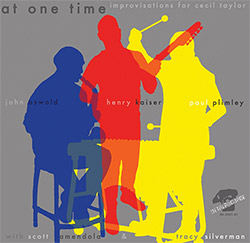




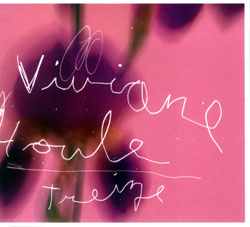
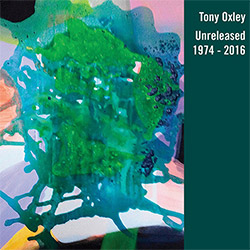

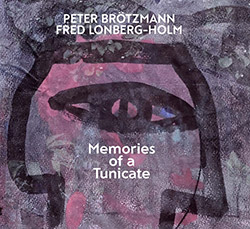


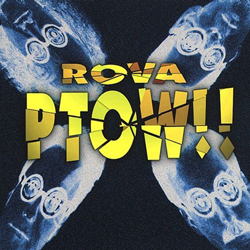
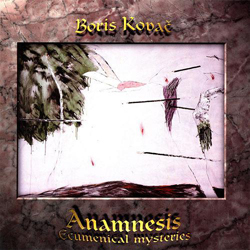


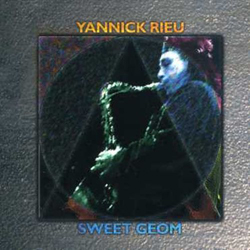
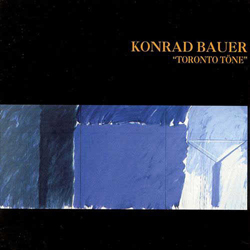








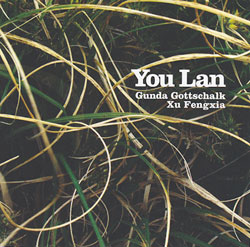














![Barker / Parker / Irabagon: Bakunawa [VINYL]](https://www.teuthida.com/productImages/misc4/35533.jpg)
![Blaser, Samuel / Marc Ducret / Peter Bruun: Dark Was The Night, Cold Was The Ground [VINYL 10-inch]](https://www.teuthida.com/productImages/misc4/35492.jpg)










![Warren, Kenny (Warren / Hoffman / Ellman): Sweet World [VINYL]](https://www.teuthida.com/productImages/misc4/35451.jpg)


![Blake, Ran / Dave Knife Fabris: Live Amsterdam 2006, First Visit [CD + POSTCARDS]](https://www.teuthida.com/productImages/misc4/35275.jpg)
![Sanna, Claudio: Compositori Sardi Contemporanei II [2 CDs]](https://www.teuthida.com/productImages/misc4/35317.jpg)












![Nevai, Nandor: <<The PRICE of FRONTIER>> Book 1: FULK [BOOK + 4 CDs]](https://www.teuthida.com/productImages/misc4/35464.jpg)
![Nevai, Nandor: <<The PRICE of FRONTIER>> Book 2: MARTIAL [BOOK + 4 CDs]](https://www.teuthida.com/productImages/misc4/35465.jpg)
![Nevai, Nandor: <<The PRICE of FRONTIER>> Book 3: JASSOM [BOOK + 4 CDs]](https://www.teuthida.com/productImages/misc4/35466.jpg)
![Nevai, Nandor: <<The PRICE of FRONTIER>> Book 4: HARD-WON [BOOK + 4 CDs]](https://www.teuthida.com/productImages/misc4/35467.jpg)

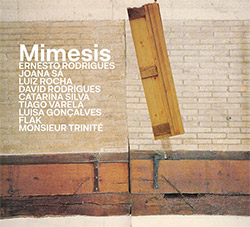




![DNS: Taking Big Bites Of The Khandas Three Cafes Deep [2 CDs]](https://www.teuthida.com/productImages/misc4/35334.jpg)




![Cleaver, Gerald: The Process [VINYL]](https://www.teuthida.com/productImages/misc4/34966.jpg)




![Alva Noto: HYbr:ID II [VINYL 2 LPs]](https://www.teuthida.com/productImages/misc4/35201.jpg)

![Baron, Derek / Luke Martin: Distinct and Concealed [CASSETTE + DOWNLOAD]](https://www.teuthida.com/productImages/misc4/35079.jpg)

![Lyle, Erica Dawn : Colonial Motels [CASSETTE + DOWNLOAD]](https://www.teuthida.com/productImages/misc4/35080.jpg)







![Alva Noto: HYbr:ID III [VINYL 2 LPs]](https://www.teuthida.com/productImages/misc4/35011.jpg)
![Kubisch, Christina / Trondheim Voices: Stromsanger 2022 For Six Voices And Electromagnetic Waves [VINYL]](https://www.teuthida.com/productImages/misc4/34628.jpg)








![Zurria, Manuel: Fame di Vento [3 CDs]](https://www.teuthida.com/productImages/misc4/35167.jpg)

![Granberg, Magnus / Nattens Inbrott / Skogen: Holde Traume, Kehret Wieder! [2 CDs]](https://www.teuthida.com/productImages/misc4/35038.jpg)
![Frey, Jurg: Outermost Melodie [2 CDs]](https://www.teuthida.com/productImages/misc4/35039.jpg)

![Pavone, Jessica: Reverse Bloom [VINYL]](https://www.teuthida.com/productImages/misc4/34895.jpg)




![Modney (Modney / Wooley / Gentile / Roberts / Pluta / Symthe / ...): Ascending Primes [2 CDs]](https://www.teuthida.com/productImages/misc4/34852.jpg)








![Elephant9 with Terje Rypdal: Catching Fire [VINYL 2 LPs]](https://www.teuthida.com/productImages/misc4/35355.jpg)
![Deerlady (Obomsawin, Mali / Magdalena Abrego): Greatest Hits [VINYL]](https://www.teuthida.com/productImages/misc4/34876.jpg)




![Haino, Keiji: Black Blues [2 CDs]](https://www.teuthida.com/productImages/misc4/35109.jpg)



![Surplus 1980: Illusion of Consistency [CD]](https://www.teuthida.com/productImages/misc4/35069.jpg)
![Staiano, Moe: Away Towards the Light [VINYL + DOWNLOAD]](https://www.teuthida.com/productImages/misc4/35037.jpg)
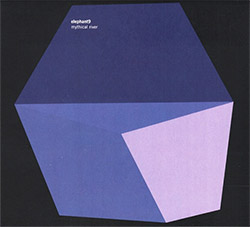



![Caveira (Gomes / Sousa / Abras / Ferrandini): Ficar Vivo [VINYL]](https://www.teuthida.com/productImages/misc4/34643.jpg)
![Gregg, J. J. / David Van Auken: Lunar Prairie [CD w/ DOWNLOAD]](https://www.teuthida.com/productImages/misc4/34611.jpg)

![Coultrain: Mundus [VINYL]](https://www.teuthida.com/productImages/misc4/32439.jpg)
![Mattin: Songbook #6 [VINYL]](https://www.teuthida.com/productImages/misc4/27317.jpg)
![Punkappella: Wake Up [7-inch VINYL]](https://www.teuthida.com/productImages/misc4/17519.jpg)
![Residents, The: WARNING: UNiNC.: Live And Experimental Recordings 1971-1972 [VINYL 2 LPs]](https://www.teuthida.com/productImages/misc4/31521.jpg)
![Coultrain: Phantasmagoria [VINYL]](https://www.teuthida.com/productImages/misc4/30142.jpg)
![Lennon, Sean Ono: Asterisms [VINYL]](https://www.teuthida.com/productImages/misc4/34517.jpg)

![Rotem Geffen: The Night Is The Night [VINYL]](https://www.teuthida.com/productImages/misc4/34631.jpg)
![Coley, Byron: Dating Tips for Touring Bands [VINYL]](https://www.teuthida.com/productImages/misc4/17906.jpg)

![Lost Kisses: My Life is Sad & Funny [DVD]](https://www.teuthida.com/productImages/misc4/lostKissesDVD.jpg)